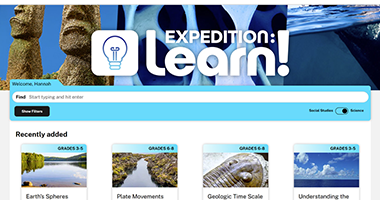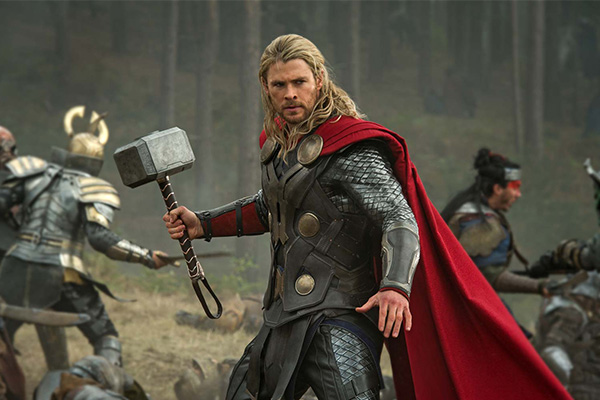Storytelling is believed to have played an integral part in every human culture since the beginnings of time. For thousands of years storytelling was the principal way of passing on cultural knowledge and beliefs from one generation to the next.
Stories have always come in many forms. Drawings, paintings, and, in modern times, photographs, film and video can all tell very detailed stories, even when no words are spoken.
World Storytelling Day is an annual celebration of the art of storytelling. Starting March 20th, people from diverse cultures and languages are encouraged to gather around a hypothetical global campfire and share stories related to this year’s theme of “Myth, Legends and Epics”. If you’re thinking of getting your school or library involved, here are some ideas you might like to try.
The following activities are designed for primary to middle school students using resources from Britannica School. Contact your library staff to find out if your institution already has access to Britannica School or start an obligation-free trial.
Why Myths and Legends?
Can you remember your favourite story as a child? Many of the well-loved titles that come to mind are likely to be based on or derived from myths and legends; frightening or fascinating tales that have survived the chasms of history and handed down through the generations.
Traditionally myths and legends were largely born from the need to provide an explanation for phenomena that people didn’t know or understand, like illness, death, love, war, social conventions or natural disasters like floods and earthquakes.
Myths and legends are one way of using stories to explain the (at-the-time) unexplainable.
Activity
Students write down a list of their favourite stories (myths and legends) from childhood, e.g. Jack and the Beanstalk, Cinderella, The Boy Who Cried Wolf, The Legend of Robin Hood, King Arthur the Legend of the Knights at the Round Table, The Pied Piper or Ballad of Mulan.
Next to each story, brainstorm a reason why that myth or legend might have been told.
Possible reasons could include: to bring people together, to communicate historical events, to explain natural phenomena, to dictate to people how to behave and what is expected and acceptable, to explain how the world works, to pass on knowledge, to use as entertainment, to gain fame, money and recognition etc.
What are Myths and Legends?
A myth is a story with symbolic meaning, it tells a truth to those who tell it and those who hear it. Myths can be shaped by time and cultures but are collectively rooted in the need to account for and justify why things are the way they are.
Legends are traditional stories told about a particular place or person, and can include elements of folklore, mythology or explanations for natural occurrences.
Activity
As a class or group, brainstorm characteristics of myths and legends. Compare the two types of stories using a Venn Diagram.
Characteristics of myths and legends can include:
- Contain elements of truth
- Passed from person to person either through writing, illustration or orally
- Can be based on historic facts e.g. the founding of the city of Rome was told as the myth of Romulus and Remus, who were nurtured in infancy by a she-wolf
- Have heroic characters e.g. the story of Heracles
- Can take place in fantasy settings e.g. In Norse mythology, the dwelling place of the Aesir gods is the city of Asgard
- Can be about the spiritual beliefs of a culture e.g. the story of the Rainbow Serpent arises from the Australian Aboriginal peoples’ belief in the fundamental role of water in sustaining life
Exploring Myths and Legends
Activity
Ask students to explore a myth or legend they are interested in by responding to the questions below. Use these collections in Britannica School as a starting point. (Students might need to click on links within each article to find a suitable story.)
American Indians, or Native Americans
Australian Aboriginal Peoples
Mythology
Japanese Mythology
Arthurian Legend
Faust Legend
Grimm Brothers
a.) Who are the characters? What is the setting? Briefly explain what happens.
b.) Who is the intended audience? What is the myth/legend telling the audience?
c.) What is the purpose of this myth/legend for the people it was created by?
d.) Is the myth or legend true or not? Discuss.
e.) Discuss how this myth has been passed down through the generations.
Aboriginal Myths
Activity
Students watch the following Youtube video illustrating the Aboriginal myth about the Rainbow Serpent and answer the following questions.
a.) Who are the characters? What is the setting? Briefly explain what happens.
b.) Who is the intended audience? What is the myth telling the audience?
c.) What is the purpose of this myth for the Aboriginal People? E.g. shaping of the land, mountains and rivers; origins of trees, birds and animals as well as natural disasters like earthquakes and floods.
d.) Is the Rainbow Serpent myth true or not? Discuss.
e.) Discuss how this myth has been passed down through the generations.
Create Your Own Myth or Legend
Activity
Students use their knowledge about myths or legends to create their own example. Allow students an opportunity to discuss their ideas with classmates.
As a class, brainstorm some possible myths/legends for the writing task, e.g. “How dragons came to breath fire” or “How did rainbows come about”?
Students then plan and prepare an oral presentation for their created story. The presentation should begin with a brief overview of the characters, setting, plot and moral or main idea or message.
Featured Image from BRITANNICA SCHOOL: Chris Hemsworth as Thor in the Marvel comic adaptation “Thor: The Dark World (2013)”. In classical Norse mythology, Thor was the god of thunder and the sky. (Marvel Entertainment)
More Educator Resources
Sign up with your email for more free resources from Britannica.
Get full access to Britannica School any time, on any device with a school-wide subscription. Contact us to request more information or get started free.

